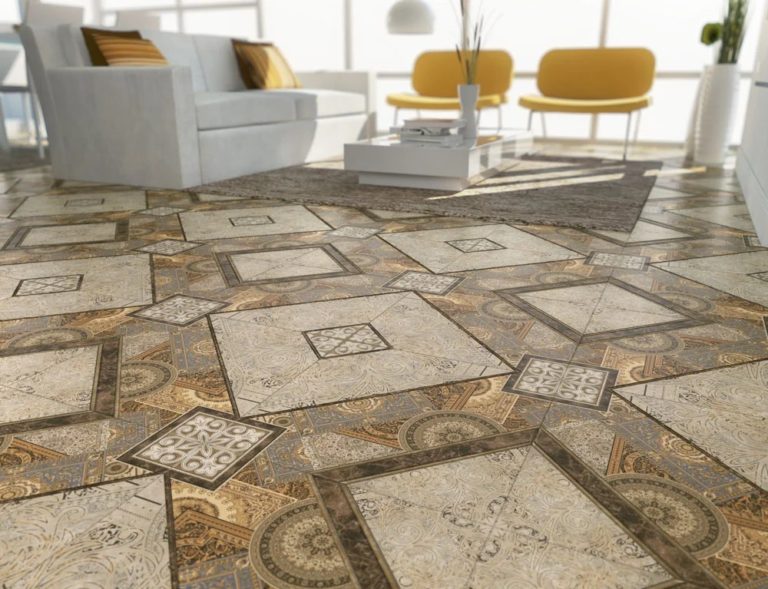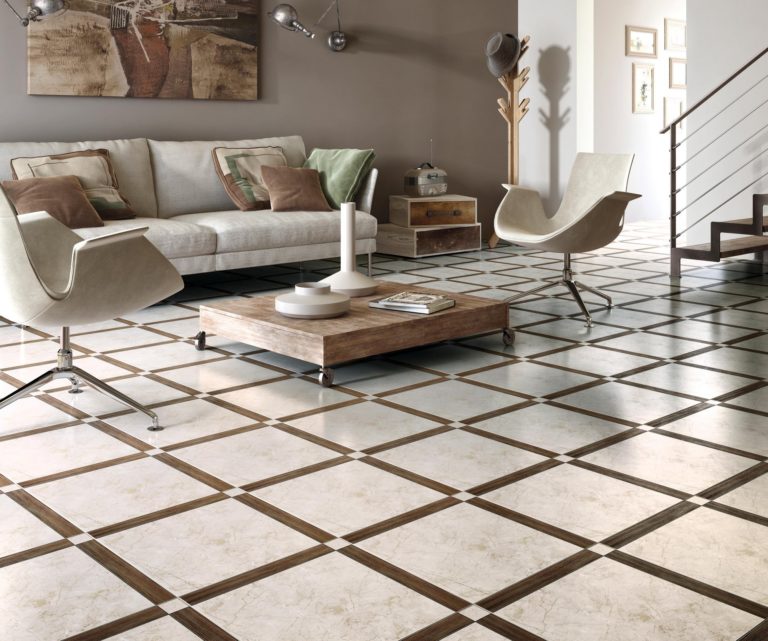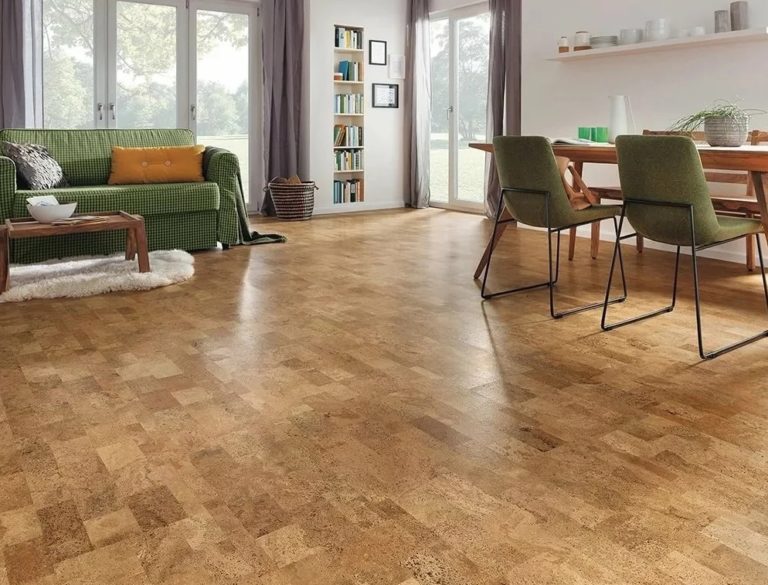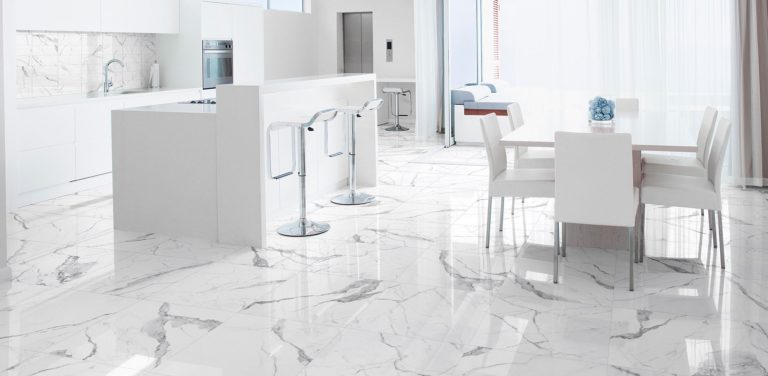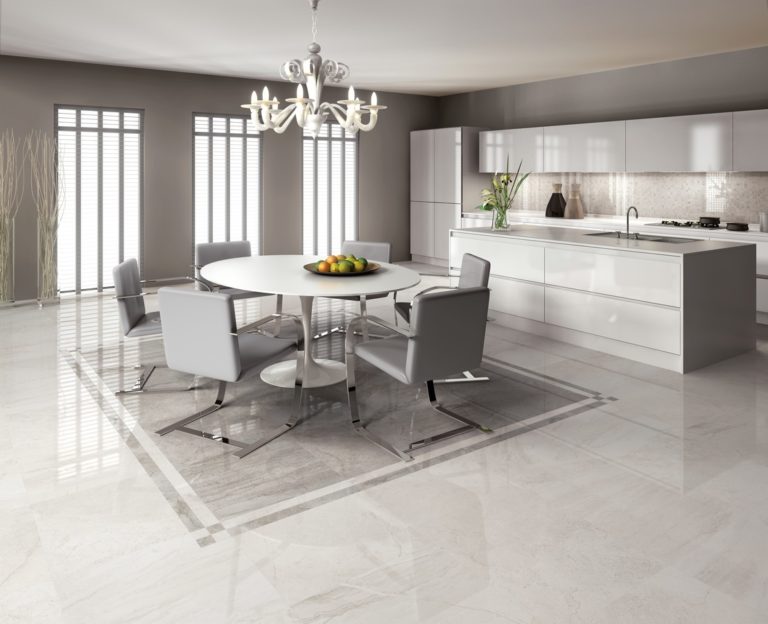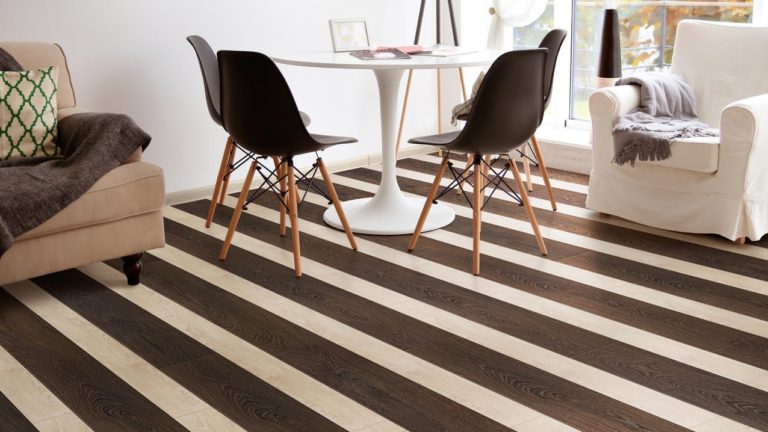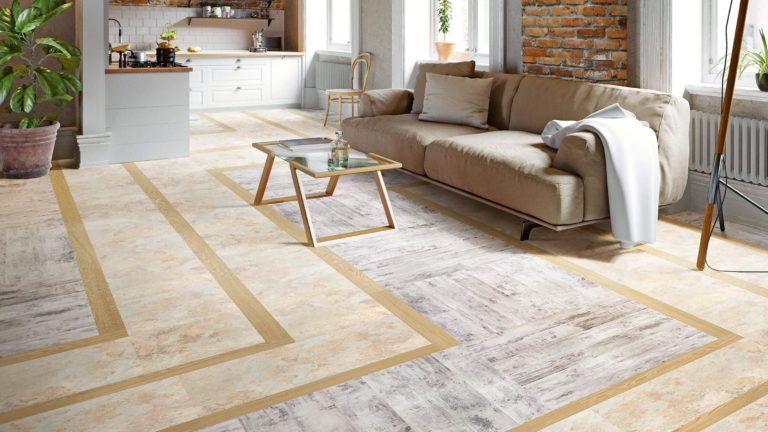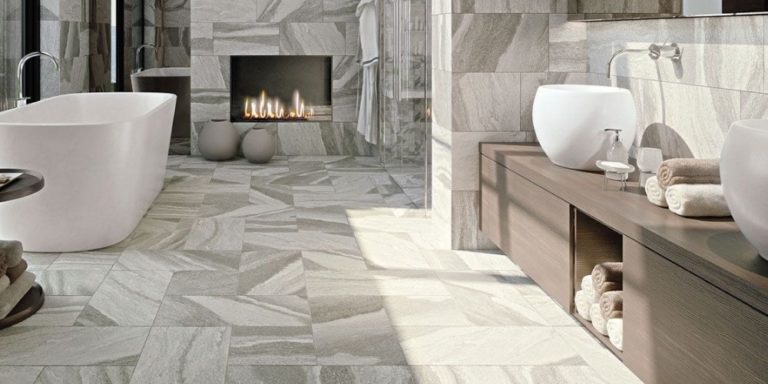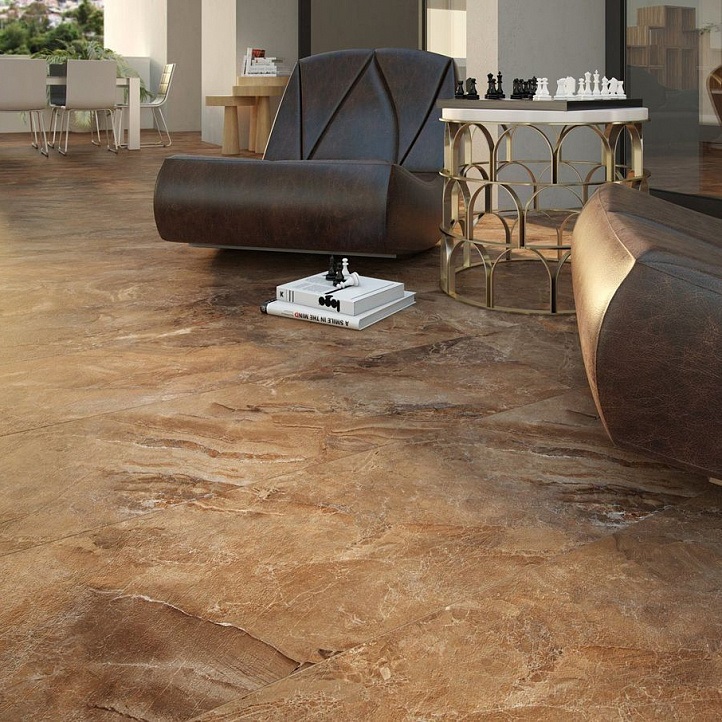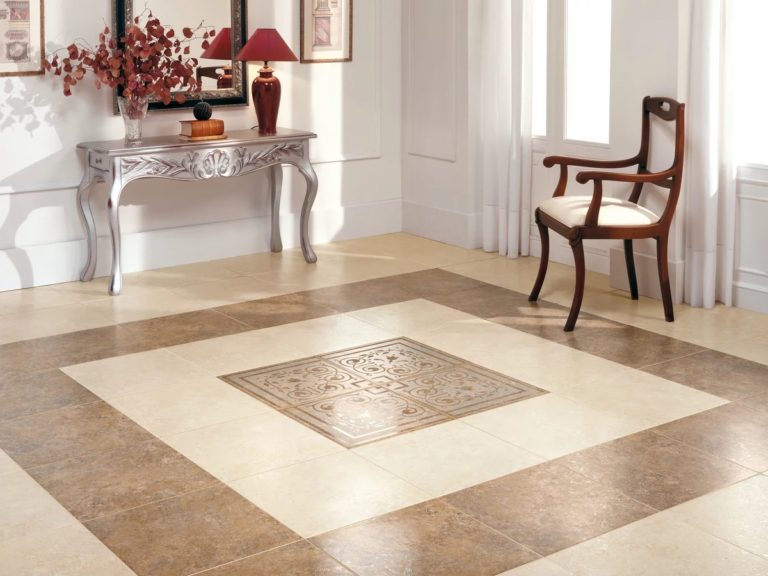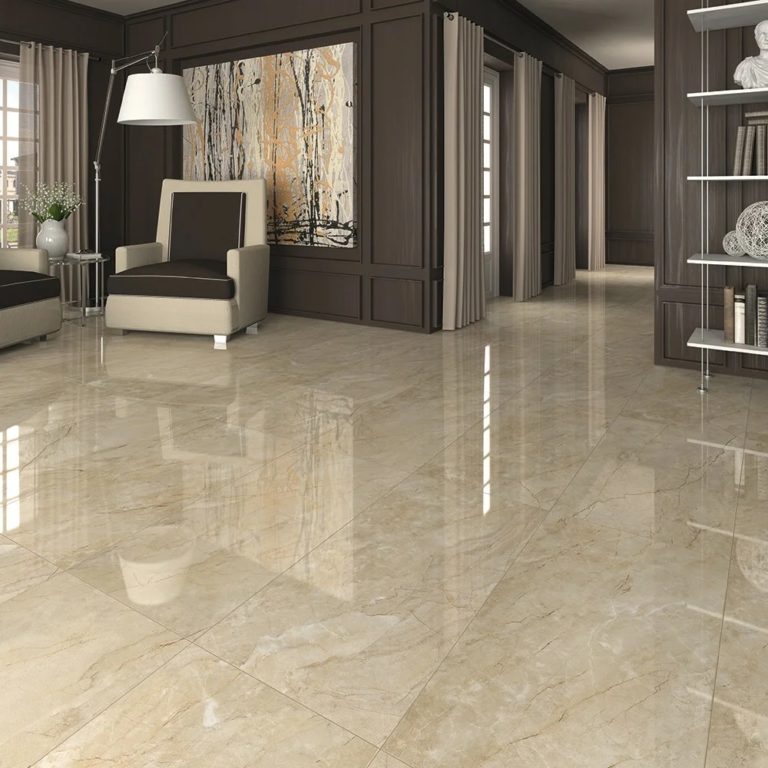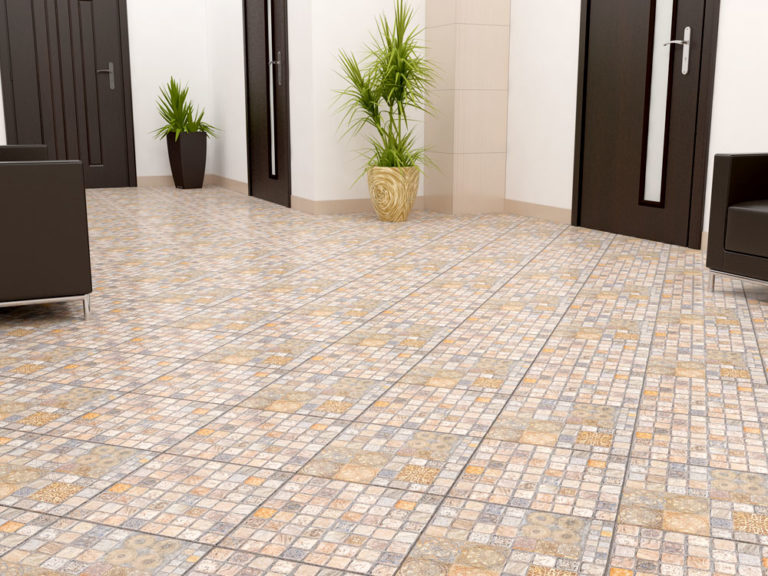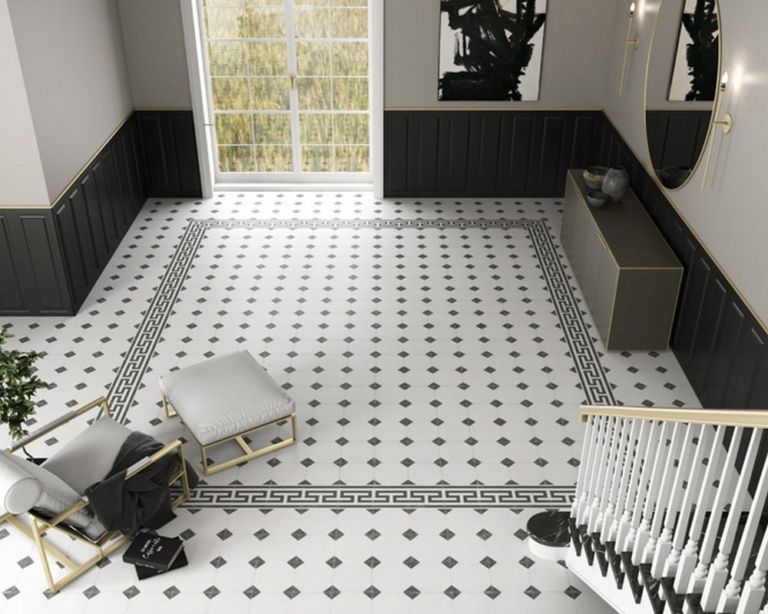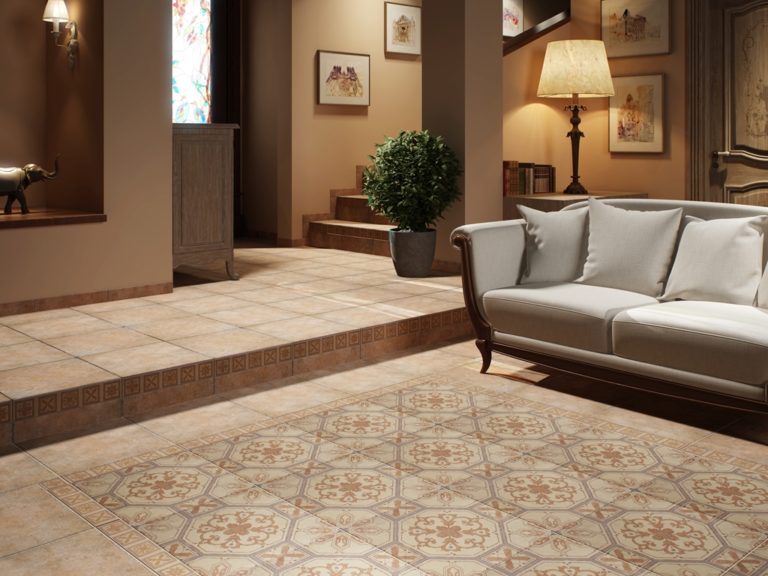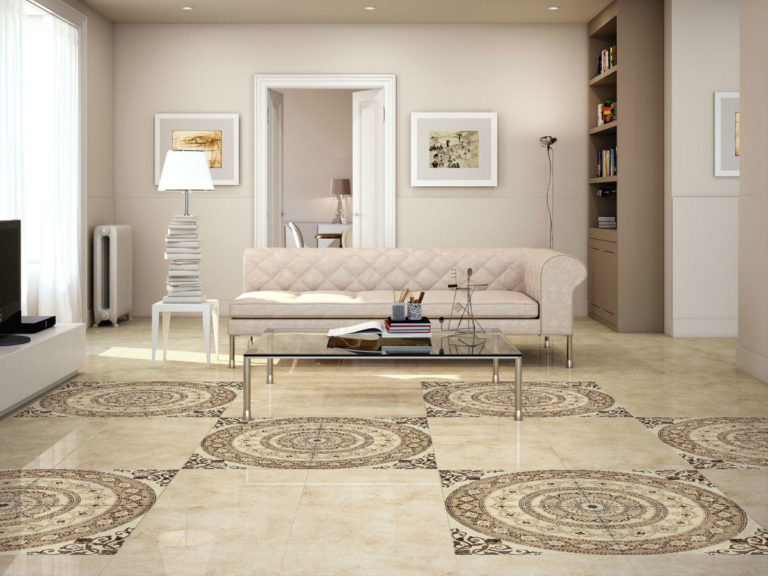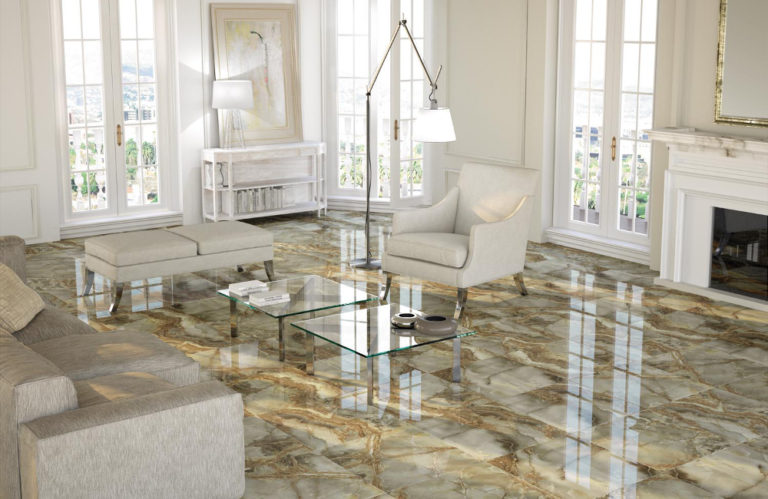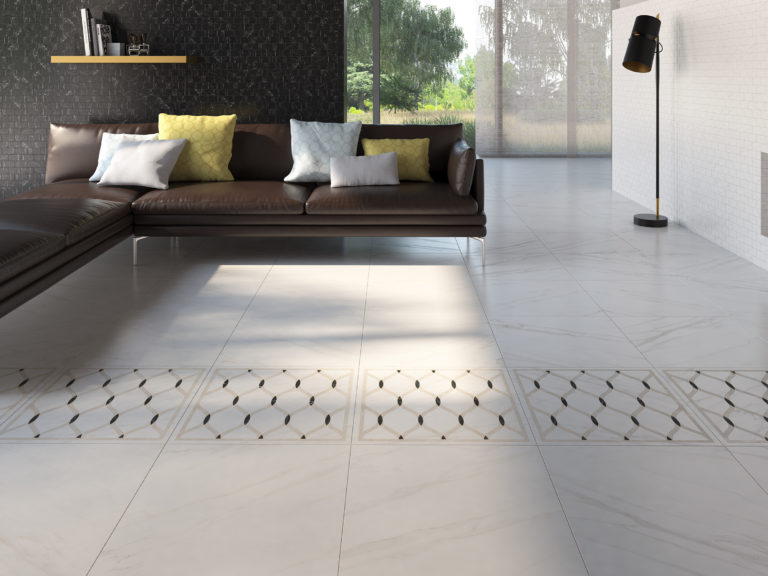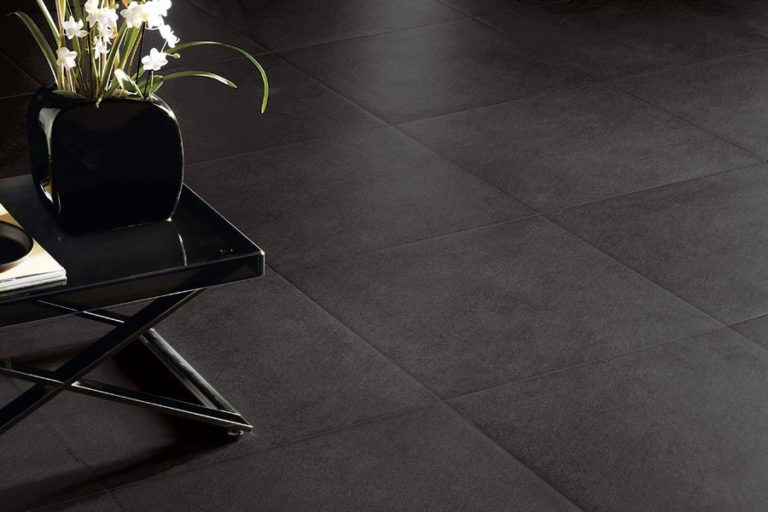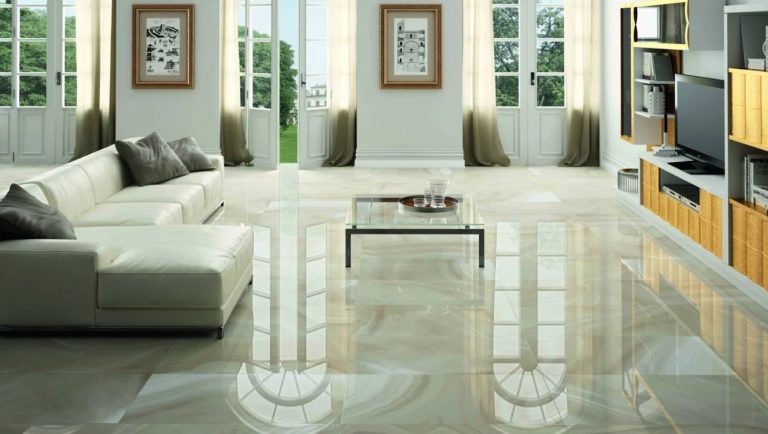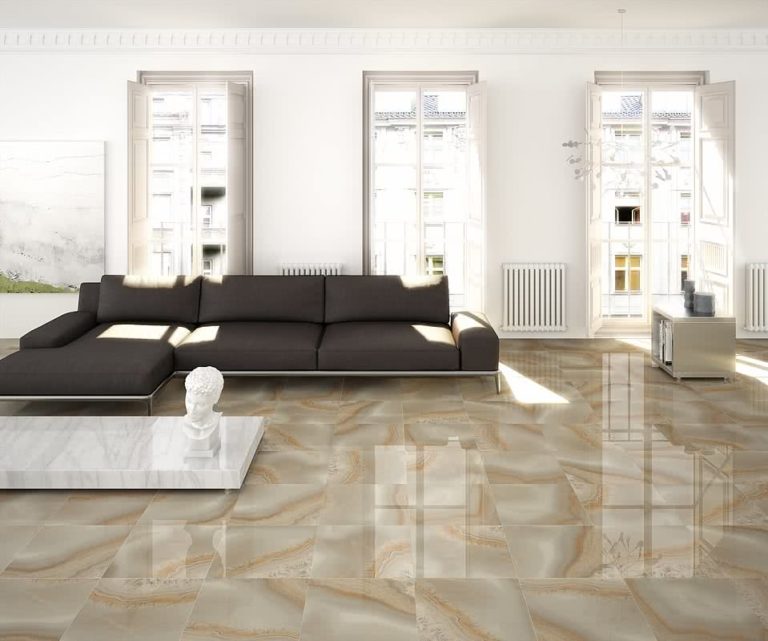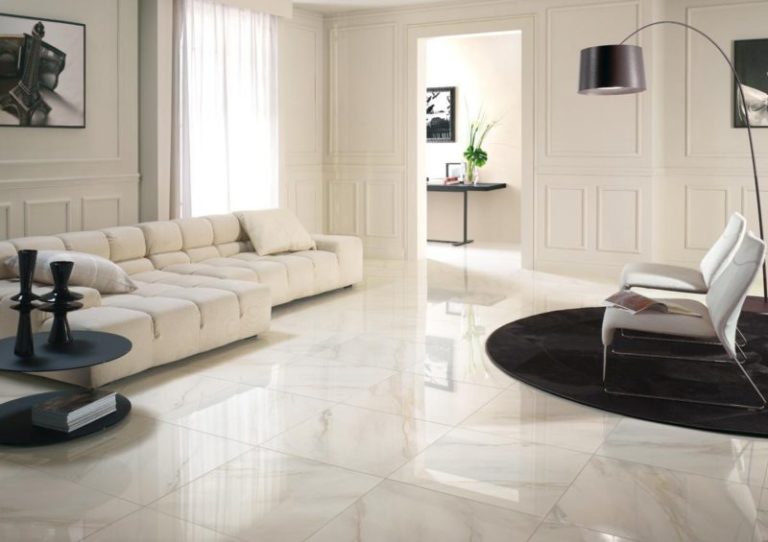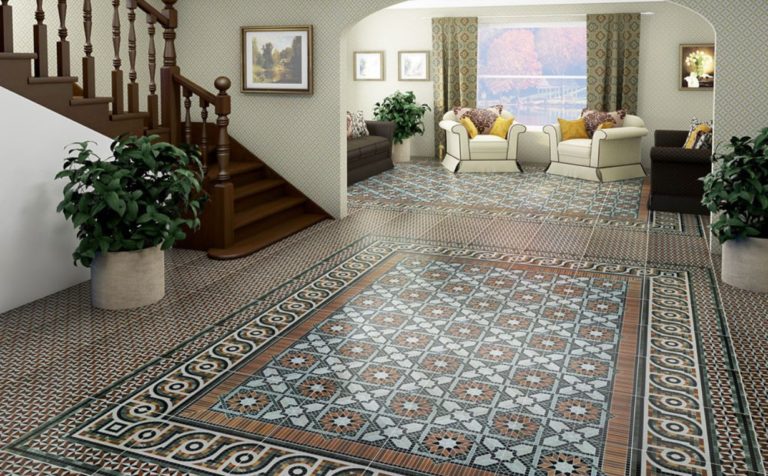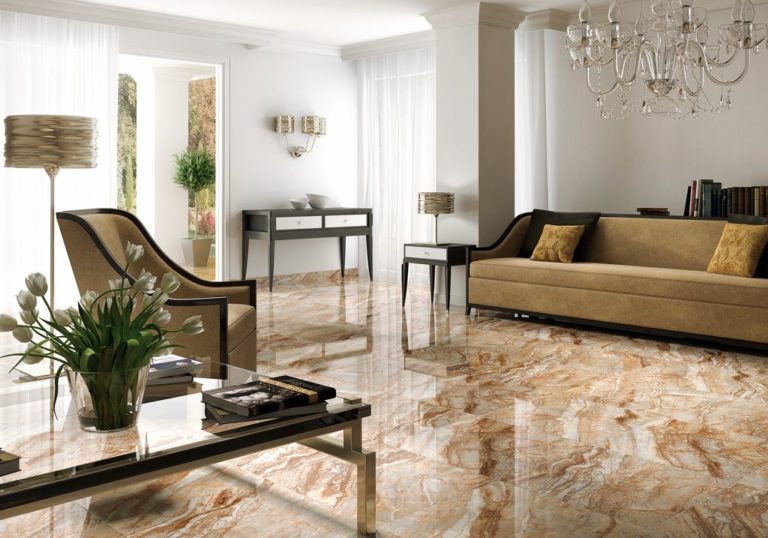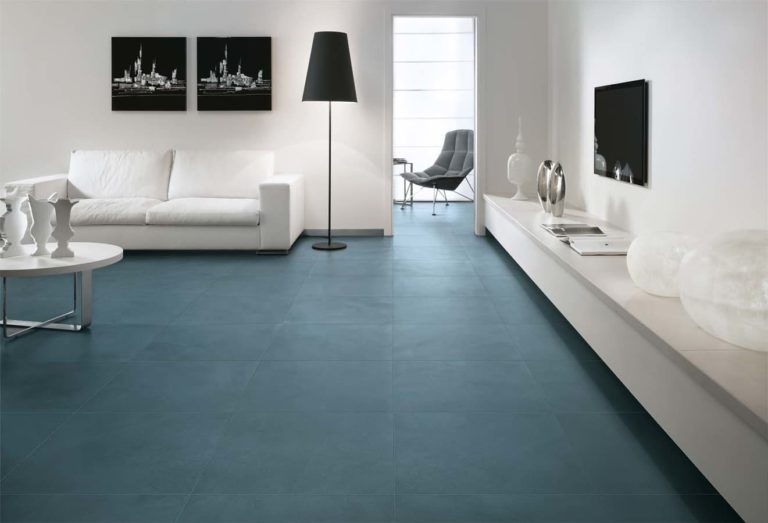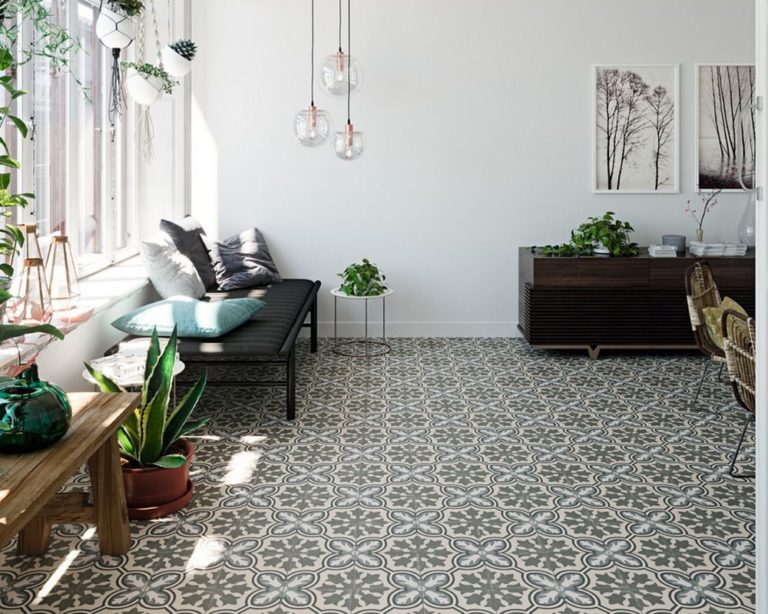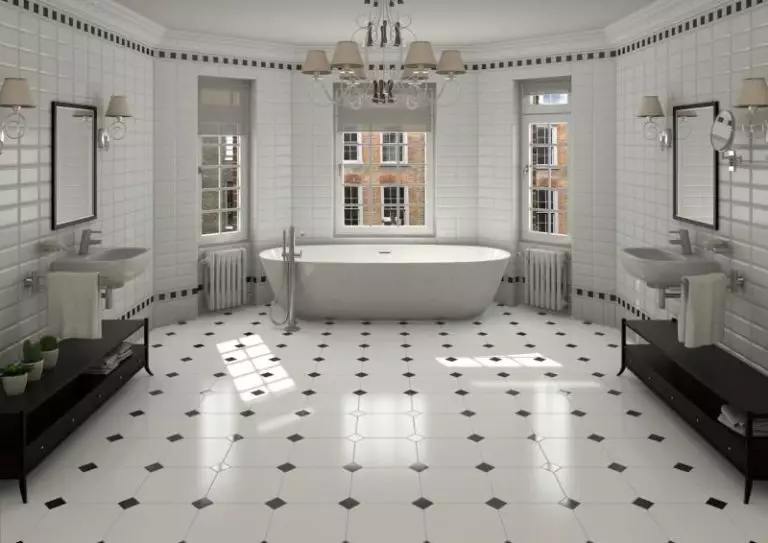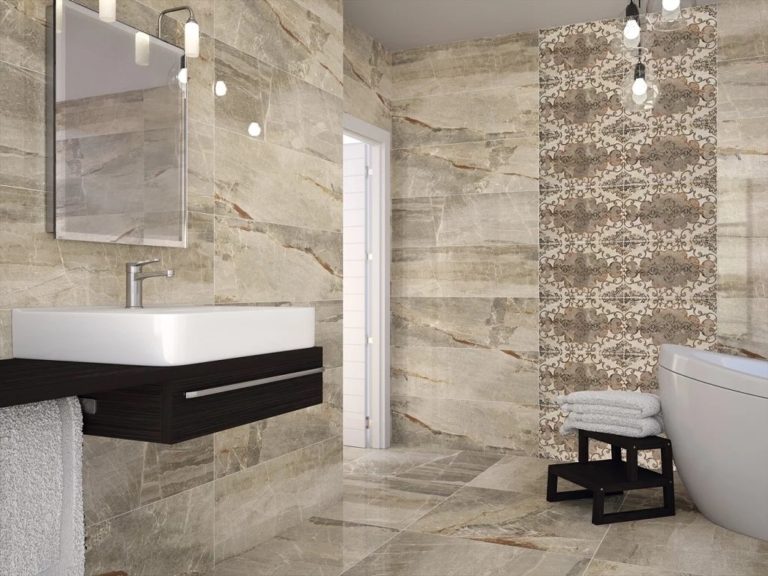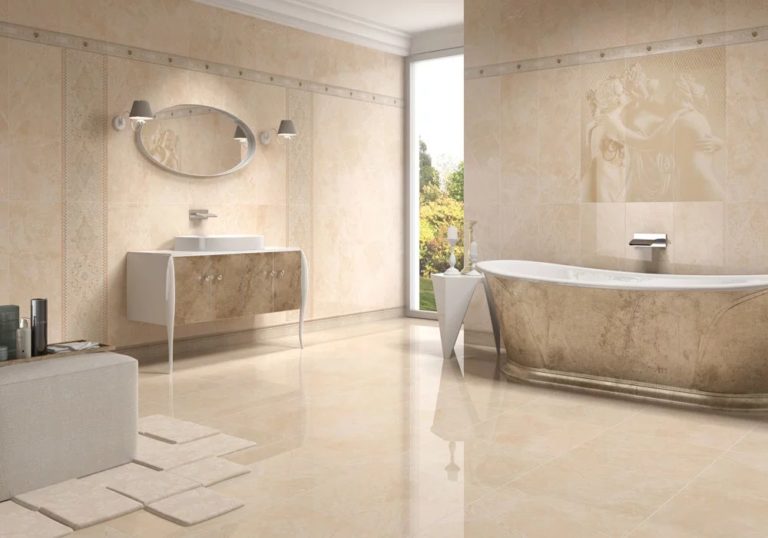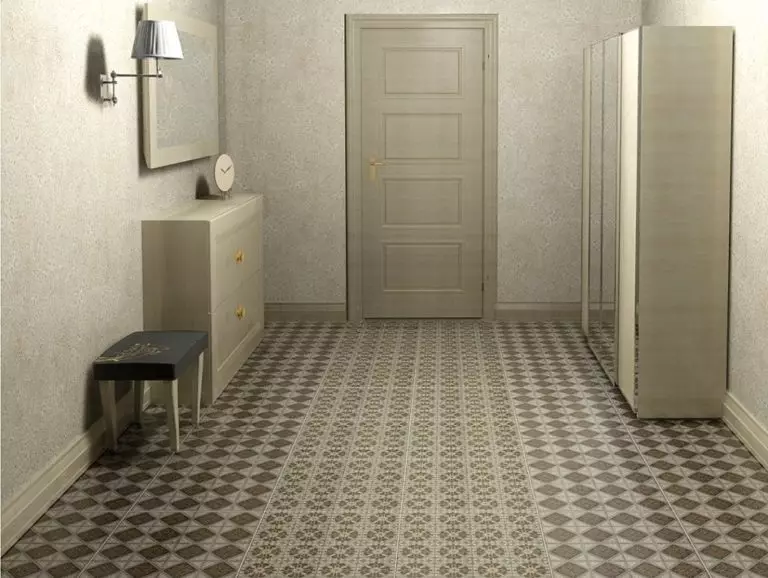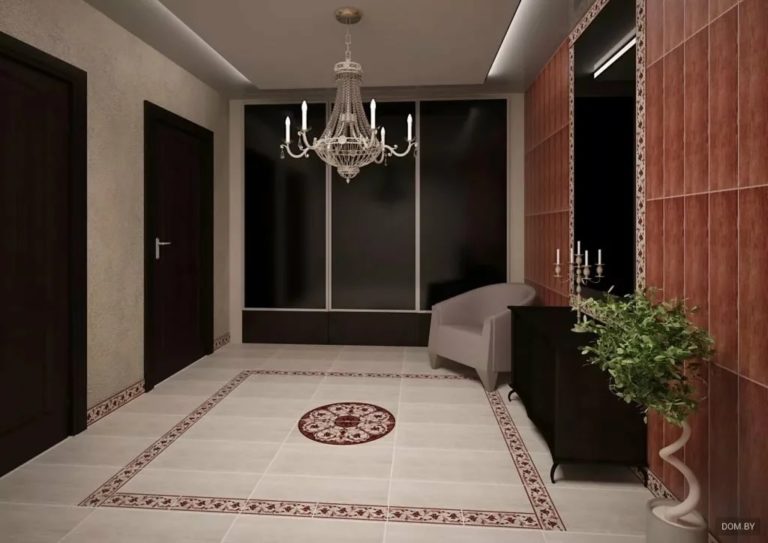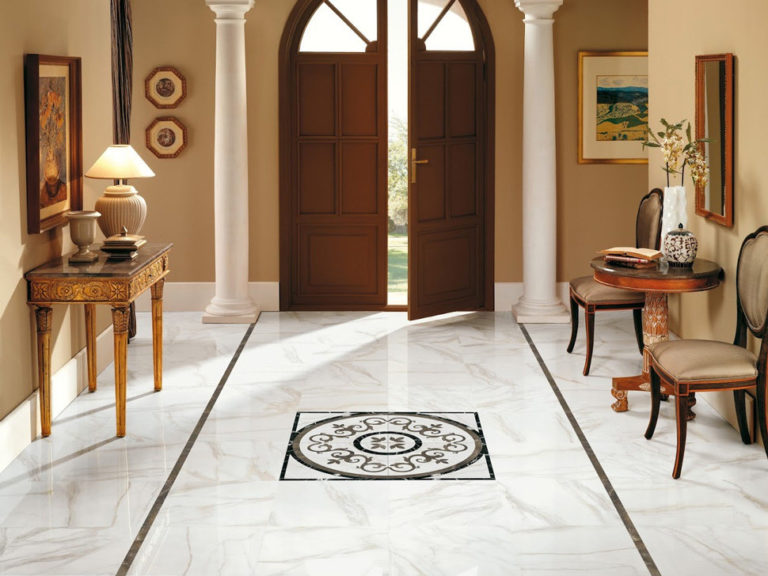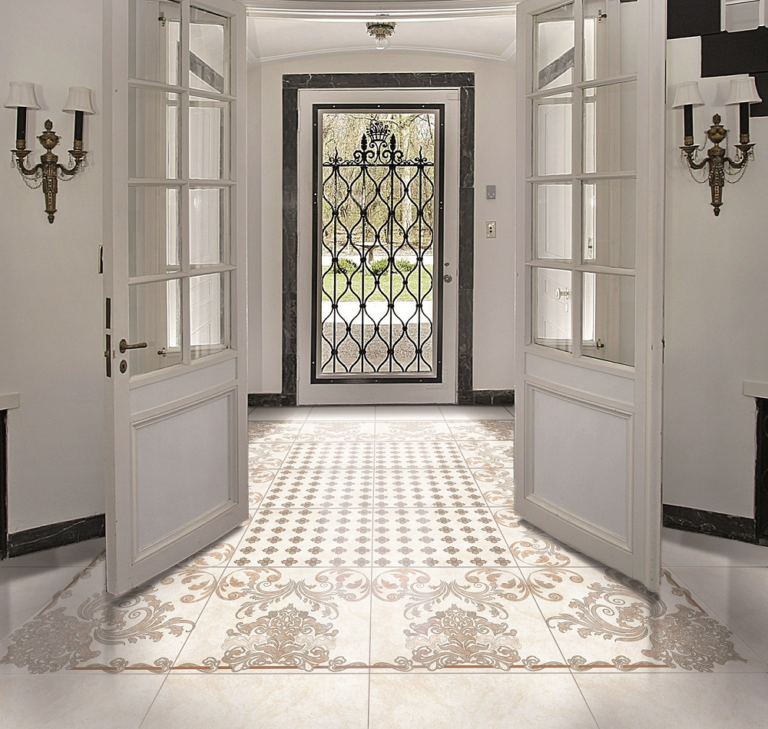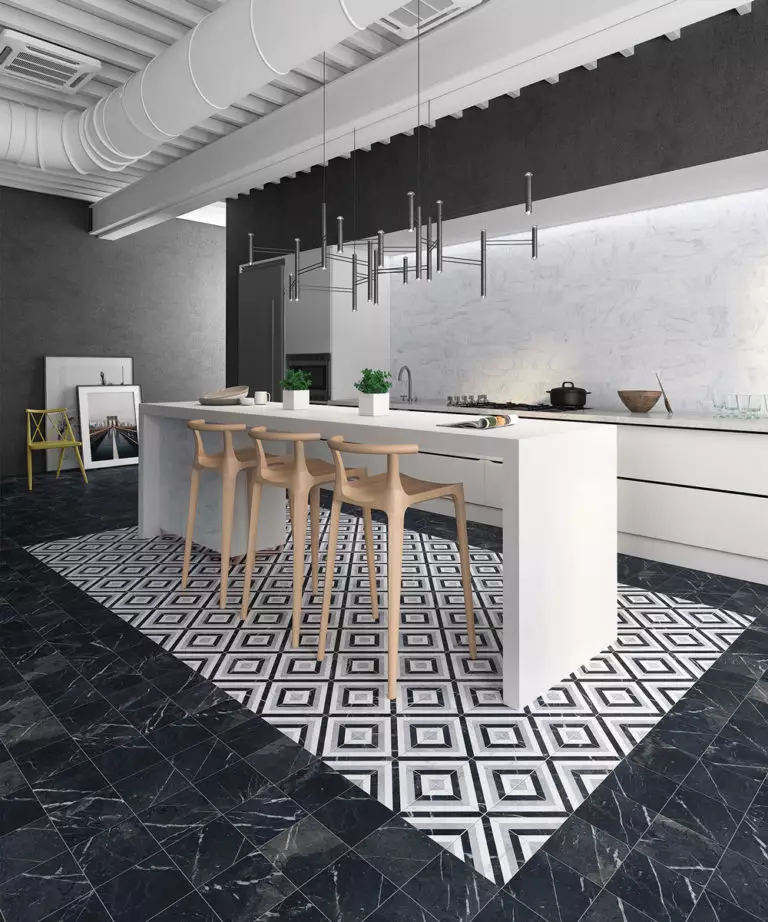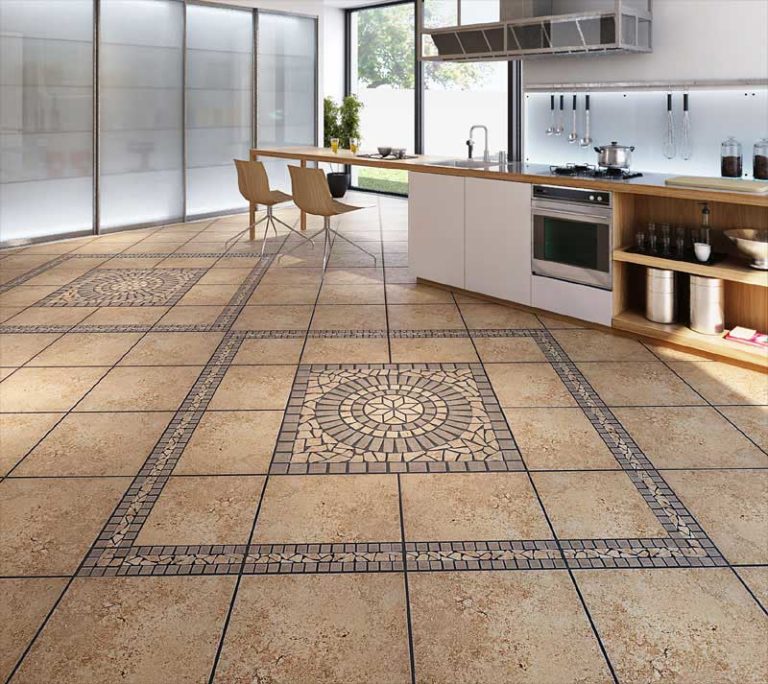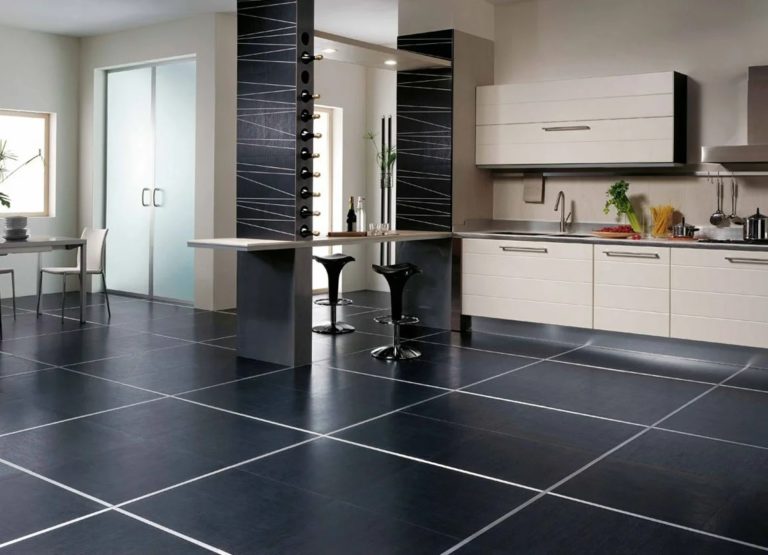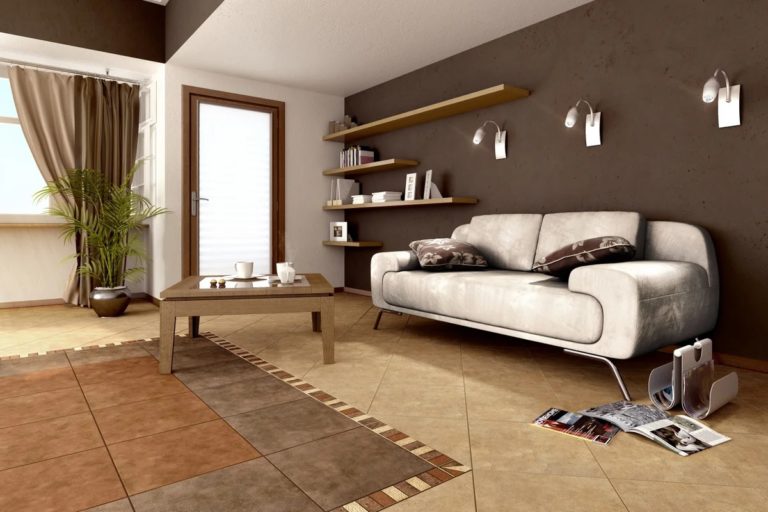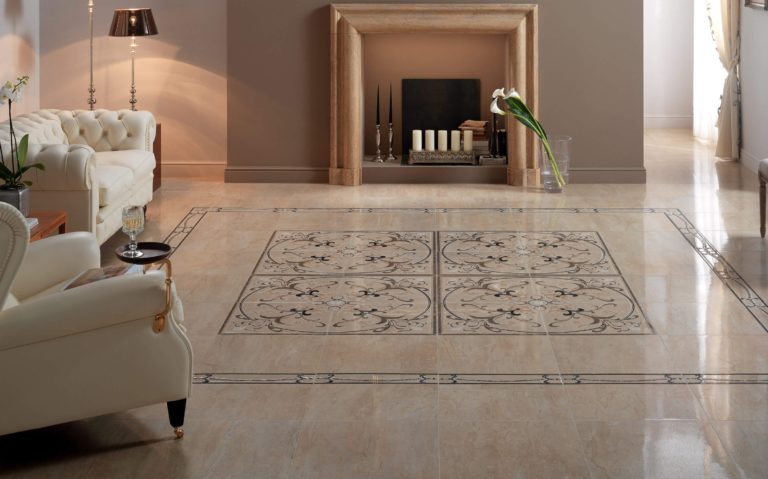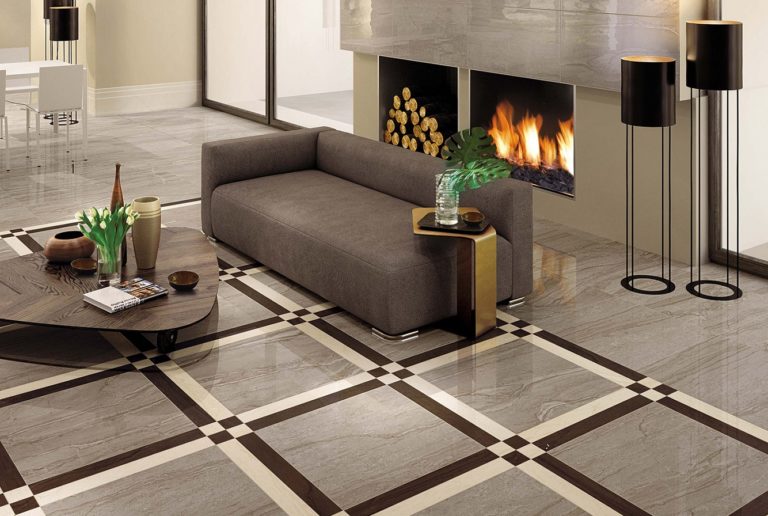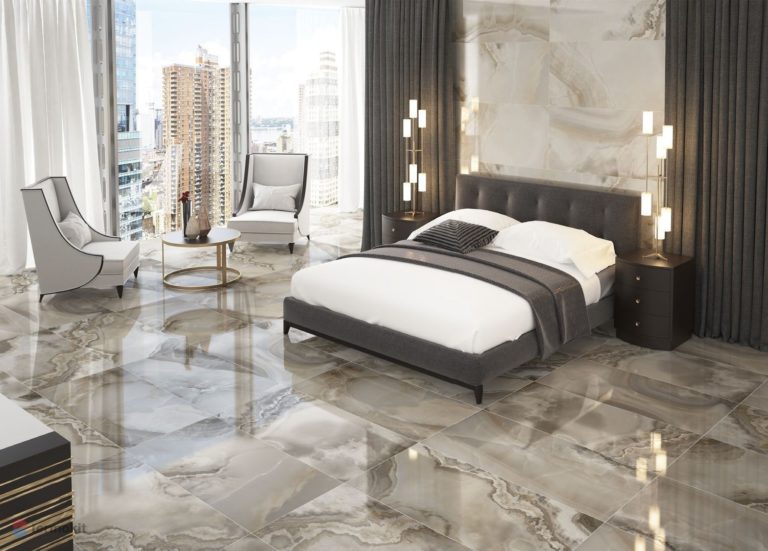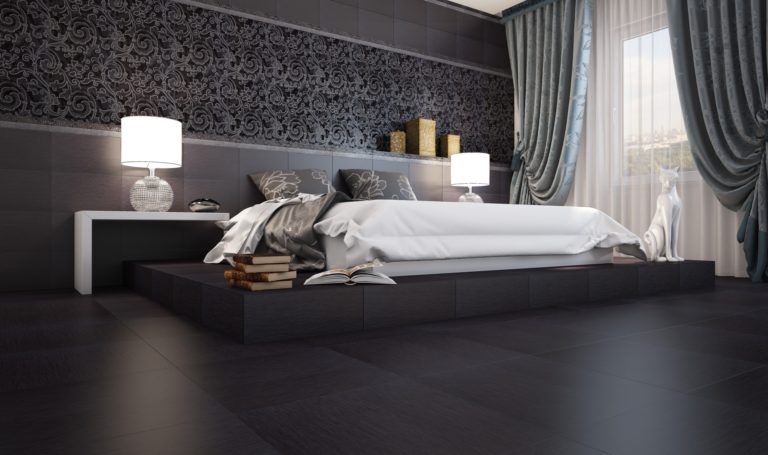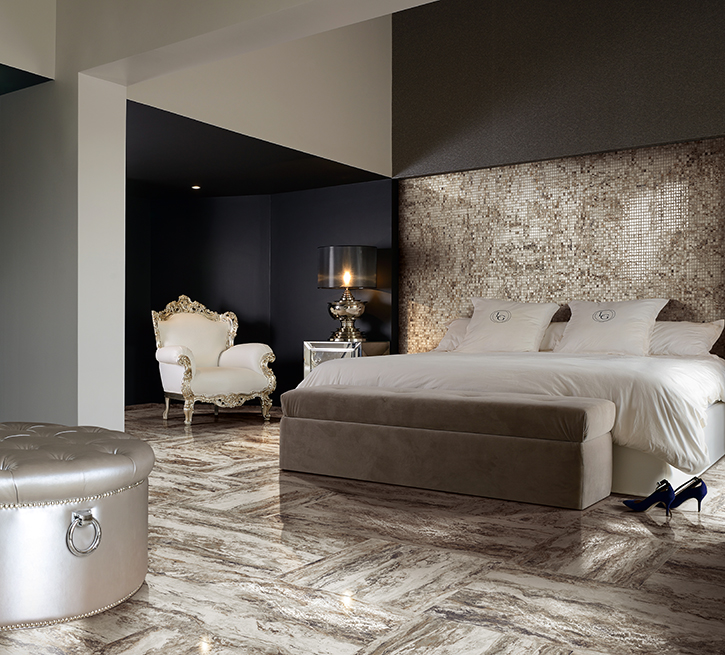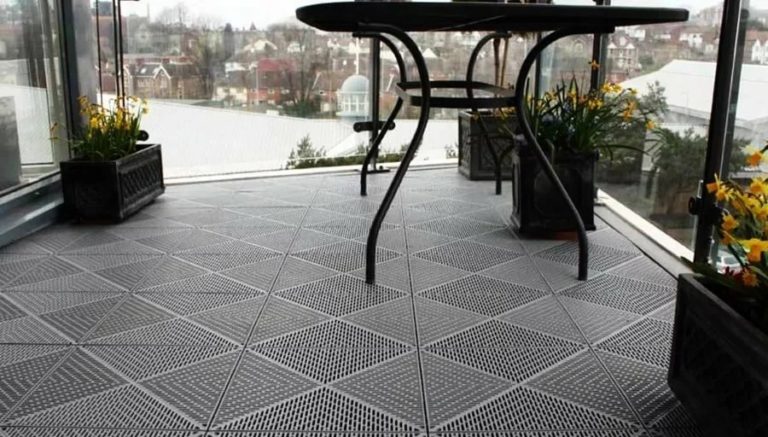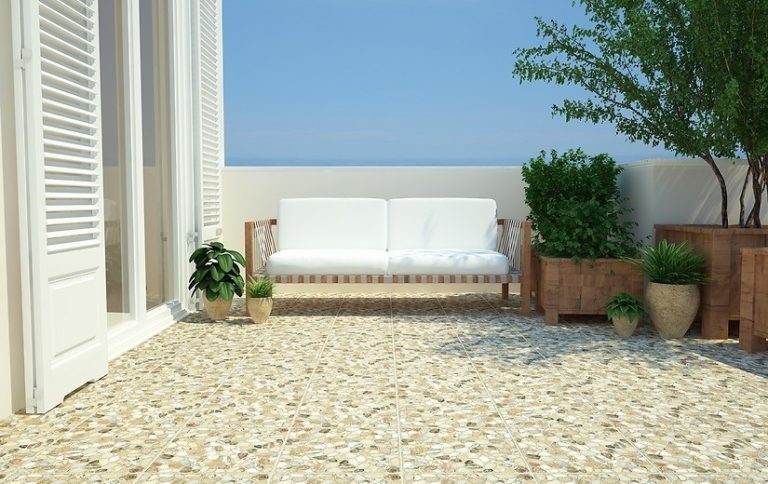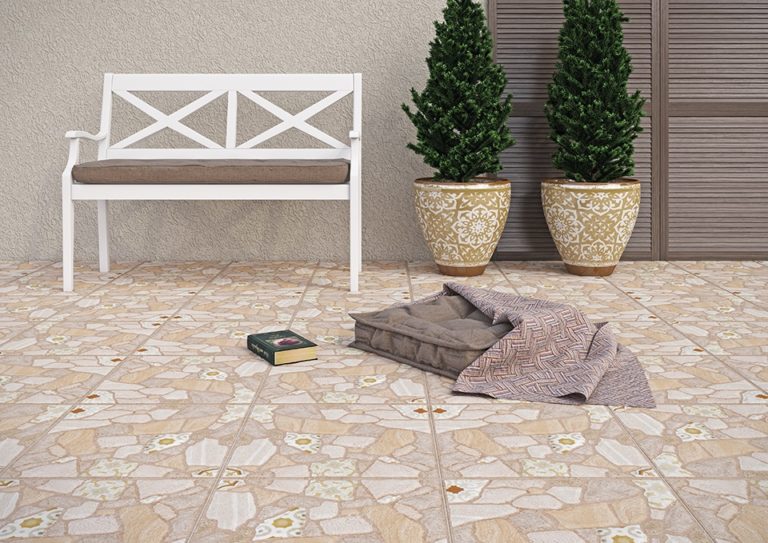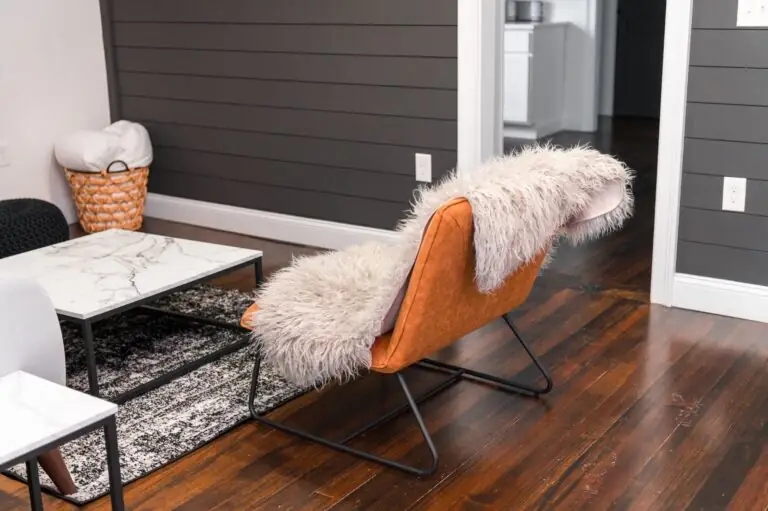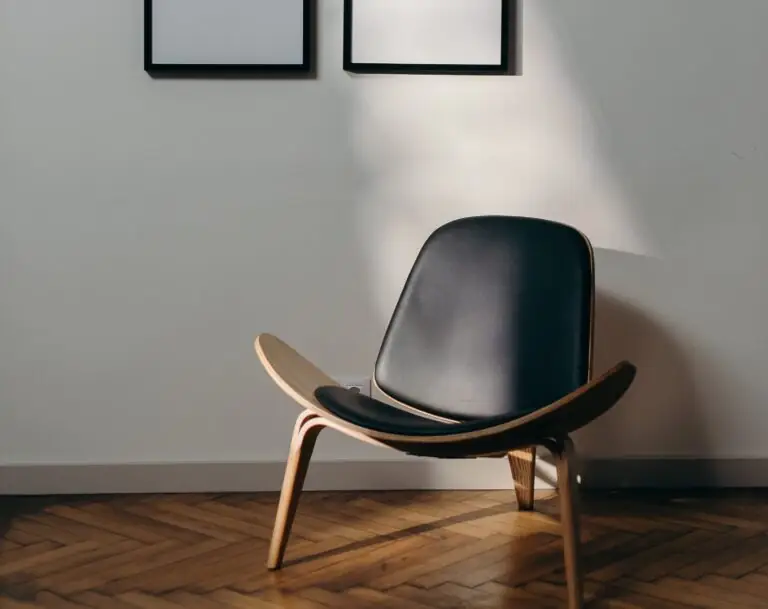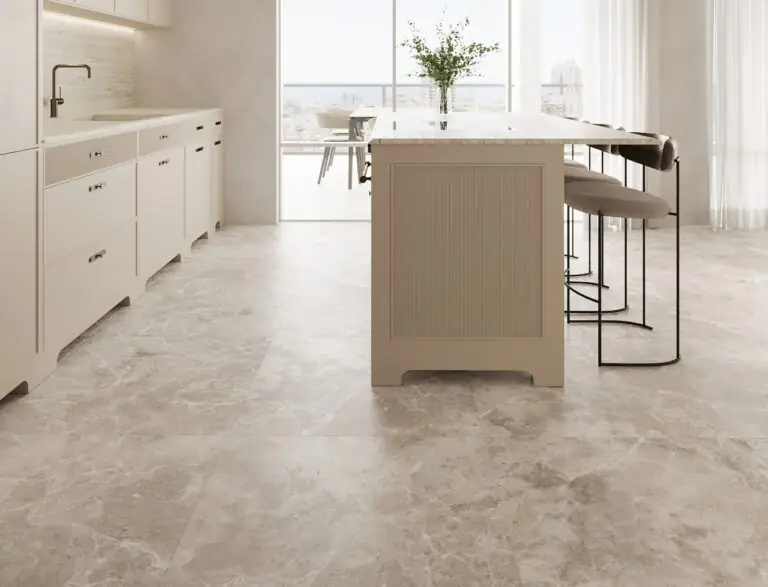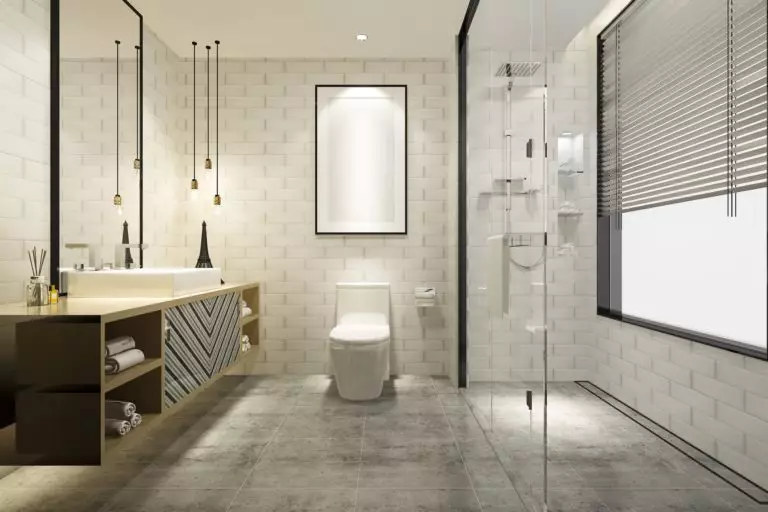
The choice of floor tiles is an important and crucial moment in any renovation. Not only the course of the process itself, but also the final aesthetic result will depend on how correctly the material was chosen.
Floor tiles have simple care and sufficient durability. Modern tiles are used for laying floors in the bathroom, in the home, office, on the street. At the same time, a variety of imitations makes it possible to create a fairly comfortable atmosphere in the bedroom. Products may vary in size, shape, style and reliability. To know how to choose a floor tile, you should consider certain recommendations.
Features of floor tiles
Often floor tiles are made of ceramic or natural stone. The most popular production method is pressing. Directly this method is considered to be the most technologically advanced.
Floor tiles are made glazed or unglazed. The tile is intended to decorate the coating and protect it from external influences. Is layed in different ways. Fasten with glue made from a cement-sand mixture. In some cases, it is supplemented with a latex additive, which adds reliability. For greater aesthetics, the joints between the tiles are processed with special compounds. There are various colors that are suitable for the interior.
Natural stone tiles are distinguished by their weight and beauty. However, due to the fact that such a product of natural origin and less than 1-shaped, you will need to carefully plan the application and installation. Stone tiles can be sawn on each side and then polished from the outside. Directly in this way the same thickness is obtained.
Some of the tiles that went through polishing will become slippery, like, for example, marble. This should be taken into account when it is planned to lay such products in a room with high humidity or where elderly people and children are.
Tile advantage for flooring
Among the floor materials that are used for decoration, tile takes a decent, one of the first positions in popularity. Floor tiles are characterized by excellent decorative qualities, are easy to clean, and serve for quite a long time. Thanks to the smooth surface, maintaining the tile in proper condition is much easier than taking care of the parquet, laminate, linoleum or carpet coating.
First of all, floor tiles find their application in humid rooms, such as a bathroom or kitchen. The closed structure of the material does not allow dust to accumulate in it or to multiply microorganisms. Therefore, it is an ideal cover for people suffering from asthma or allergies.
To make the floor with such a coating clean, just vacuum it and then wipe it with a damp cloth.
Durability
It is unlikely that carpet or laminate flooring can last you a long time, a maximum of 5-7 years. At the same time, the service life of tiles can easily reach 40, or even 50 years. To date, such durability can only boast – parquet board. However, unlike tiles, parquet will need to be updated periodically.
Of course, the durability of a particular material will depend on the quality you choose. For example, ceramic tiles single or double firing will last you at least 30 years.
Porcelain tiles have an even longer service life; such a material will delight you for at least 50 years. Natural stone coating, which has good resistance to acids of any type, is no less durable.
Floor tile selection options
The question often arises which floor tile to choose. First of all, the choice will depend on the type of room where the tiles will be laid. So, it happens to be a bathroom, kitchen, living room, hallway. Features of finishing work will depend on this factor. There are certain characteristics of the choice of the products in question.
Material
To know which material to choose a tile from, you should familiarize yourself with the recommendations:
Size
Today it can be stated that small floor tiles are out of fashion. The main trend now is – large format tiles. Beautiful, durable, designed in a simple modern style, it will satisfy every taste. Sales department experts recommend floor tiles of sizes 100×100 and more – first of all.
Using large format tiles, you can create the feeling of extra space. It will perfectly fit into the interior of any room: living room, bathroom, hallway, kitchen, corridor, loggia and even a bedroom.
The huge size of the tile allows you to radically alter the appearance of the room, transforming the space around. You can achieve even greater effect by laying it diagonally.
However, dimensions are selected taking into account such an indicator as area. When the room is less than six square meters, then you should choose another option. Tiles of medium size or special mosaic look good on the floor.
Structure
There are materials on the market with a glossy, matte or embossed coating. It is necessary to take into account that the tile is extremely slippery, so you should not choose glossy models, even when they look extremely impressive. A glossy surface will become dangerous when moisture penetrates. When you want glossy tiles, it is optimal to apply them in places with low humidity.
Color and tone
Despite the fact that the choice of this indicator is carried out directly by the buyer, there are general rules on which to emphasize:
Leading manufacturers of tiles have studied the preferences of their customers and today can offer a variety of colors and patterns for every taste. And individual manufacturers went even further and developed a floor covering that mimics concrete and brickwork.
Marking
Each packaging with tiles has special designations. They help and suggest how to make a choice of floor tiles. In this symbolism, the manufacturer encrypts all the important information. When the palm is depicted, it is a wall tile. When the foot, it means for the floor. A snowflake will mean that the material is intended to be used as an exterior finish.
Main characteristics of floor tiles
Each type of floor tile differs not only in appearance and size, but also in technical characteristics that determine the scope of a particular product. We will consider in detail the main ones.
Surface abrasion of floor tiles
Tile, as a kind of flooring, has been known for a long time. Due to the presence of various forms, parameters, textures, different colors, it is widely used during the design of various interiors: in the bathroom, kitchen, corridor and living room. It is characterized by long term use, high reliability and external attractiveness. When choosing tiles as flooring, it is important to take into consideration the suitability of using in a particular location.
PEI 1: The first category (premises with low attendance)
The resistance of category 1 tiles will make it possible to use it for laying in areas with extremely low traffic. It is mainly used where there is almost no movement and wearing shoes is ruled out. Such parameters include a bathroom, a bedroom and other rooms that are not used regularly.
Pros:
Minuses:
PEI 2: The second category (residential premises excluding corridors and kitchens)
Tiles, which belong to this class of resistance, are intended for residential premises, where there are places with a lot of visits. However, it is still calculated for soft shoes for home. Such tiles are laid in the living room, but not on balconies, loggias, stairs, corridors and hallways. The product is used in an apartment and a private house.
Pros:
Minuses:
PEI 3: Third class (corridors, balconies, kitchen facilities)
For rooms where the attendance frequency is average, tile category 3 is suitable. Its wear resistance parameters will make it possible to move both in home and street shoes. Basically, such products are stacked in every living room, including corridors, balconies, attics, kitchens. Suitable for hotel lobby, stairs, dining room, etc.
Pros:
Minuses:
PEI 4: Fourth class (markets, office premises)
When the frequency of attendance is more than average in the room, the floor covering will be subjected to greater abrasion, therefore, in such areas you need to use category 4 tiles. Such a group is suitable for laying both in a private home and in a public place, for example, in a restaurant, a large hotel, a small market, office space, etc. In particular, this product is well used on the stairs, on the terrace, etc.
Pros:
Minuses:
PEI 5: Fifth class (rooms with heavy traffic)
The coating of this resistance class is directly created for use in places where there is extremely intense traffic. Products that are included in this category have significant differences from class 4. First of all, they are significantly more reliable. The cover is intended for laying in large shopping centers, market, park, airport, railway station, etc.
Pros:
Minuses:
How to choose floor tiles for home
It is no secret that the choice of tile is influenced, not least, by the type of premises in the apartment or apartment building in which it will be applied. On this basis, you can make the following classification:
Before buying, it is necessary to study the main qualitative characteristics of the selected tile: wear resistance, porosity, frost resistance, tensile strength, surface hardness, chemical resistance, friction coefficient, tone and caliber. An important role is also played by the compositions for filling the joints between the tiles, allowing to increase the service life and aesthetic qualities of the finished coating.
True, choosing tiles for flooring should be subject to the requirements for the material, depending on the purpose of the room. If this, for example, is a hallway, bathroom, kitchen which floor tile should I choose?
Floor tiles in the Bathroom and Toilet
Here every new day of the apartment owners begins and ends, therefore it is especially important to create coziness and good mood in these rooms so that cleanliness and beauty please the eye.
Cosmetic and hygiene products can leave indelible stains on the floor. And detergents used for their cleaning have sufficient chemical activity. All this suggests that for both the wall and the floor, it is necessary to use tiles with high rates of moisture resistance and acid resistance.
For laying on the walls in the bathroom and toilet, choose glazed tiles, matte or glossy, and a great addition to it are borders and decors. The vertical arrangement of ornaments allows you to visually increase even very small spaces.
The latest trends in tile fashion are imitation of nature: stone, wood, plant fibers. These textures will be ideally combined with almost any decoration of neighboring rooms. To finish the floor use non-slip, with high porosity tiles of abrasion class I or II.
Floor tiles in the Hallway and Corridor
The entrance hall is distinguished from other rooms by heavy traffic. This is a place of accumulation of dirt, which are carried by households on the soles of shoes from the street. In the hallway, the floor tiles should be thick enough so as not to be damaged by the weight of the person.
The floor load at the entrance to the apartment is one of the most significant. The more dirt on the soles of the shoes, the faster the floor covering in the corridor will lose its appearance. Therefore, it is so important to thoroughly wipe your feet at the entrance, especially in wet weather.
It is worth paying attention to the tiles of the III and IV class of abrasion. Here, even the use of ceramic granite can be used. It has no microcracks and pores, and this provides it with higher wear and water resistance compared to tiles.
What technical characteristics and operational qualities must have a tile purchased for laying on the floor in the hallway. Of course, first of all it is:
In the hallway the floor is often wiped, that is, it undergoes intensive wear, so it is advisable to purchase a class 3 tile.
It is very important that the tile is characterized as low permeability as possible. The surface of the material should be non-slippery. In addition, the tile must match the interior design in color and style of the room. In this regard, large-sized tiles for the floor in the hallway are the most optimal option.
Floor tiles can visually enlarge a small corridor. To do this, it is recommended to use a light tile with a smooth surface. Dark tiles, especially small ones, on the contrary will reduce the room.
To make the hallway look more spacious, you can put light brown, blue or gray tiles on the floor. It is not recommended to use black color, since chips and scratches will be clearly visible on it.
Ceramic embossed tiles on the floor, laid immediately before the exit, will help to give a larger volume to the room. This will not only become an interesting design technique, but also a safety measure – a place near the threshold will not be slippery.
The installation of flooring should be carried out using tools appropriate to the class of tiles used. Inaccuracies in the process of laying the tiles are not permissible, otherwise you will need to redo it again.
Floor tiles in the Kitchen
Every year, it is becoming increasingly difficult to accurately determine the issue of choosing a floor covering for the kitchen, not because there are few high-quality products, but, on the contrary, because its assortment is only growing, production technologies are becoming more advanced, already not to mention that multifaceted forms of design, imitation, etc. can be applied. Which tile to choose?
Of course, the ceramic tile becomes the ideal solution for the kitchen, it is easy to lay, easy to clean, and it’s not as expensive as other materials, especially considering its durability and resistance to damage.
Something constantly happens to the kitchen floor: hot water and broth pour on it, leftover food and kitchen utensils fall on it, various, sometimes very heavy appliances press on it: washing machine, refrigerator, kitchen cabinets, stove. The requirements for mechanical, chemical indicators and water absorption of the tile are especially high.
Most often, people just dwell on the classic options for tiles, but there are simply amazing modern solutions. All you need is to buy a ceramic tile imitating marble. At the same time, neither by touch nor external, it will not be distinguished from natural stone.
The same trick is available with granite. Surprised? In this case, the possibility of creating a seamless coating will be even more pleased, that is, an imitation of a continuous canvas is created, respectively the dirt will not be clogged in the joints, and the interior gains wealth and prosperity.
There is also a tile that outwardly completely imitates natural wood, respectively, laying out such a coating, you can complete the idea with the use of parquet in other rooms.
The tile on the floor in the kitchen can be very original, and at the same time the prices remain quite affordable, and compared to natural stone and wood products, the price is simply ridiculous. So take advantage of worthy offers from leading manufacturers. There are many options, the main thing is to make the right and balanced decision.
Floor tiles in the Living room and Bedroom
The traditions of antiquity in the use of tiles for flooring in the living room and bedroom become relevant again. There really is a lot of free space for the flight of your creative imagination, because you can use a variety of decorative elements, panels, finishes, a variety of styling options.
If there is a need to make cool ceramic floors warmer, then the warm floor system can be used, which can warm you on cold winter evenings.
Floor loads are not the same everywhere. In the bedrooms, tiles of I and II classes of abrasion are used, because the traffic here is very low. In the living room and hall, the floor load is more significant, especially where there is a dining table, cabinets and sofas. A combination of different classes of abrasion of tiles from II to IV is justified here.
Floor tiles on Balconies and Outdoor areas
When buying flooring for a balcony, you must focus on the indicator of wear resistance. On the package it is marked with the abbreviation PEI. A value of 3 out of 5 possible will be sufficient. It should be borne in mind that the material for the floor will be constantly outdoors, subject to an open balcony. That is why it must be resistant to moisture and frost. Large changes in temperature can ruin the tile if it does not match the properties. This also applies to other rooms that are located outdoors.
When choosing material for the floor on the balcony, you should pay attention to the thickness. It should not be too large, otherwise the load will be exerted on the balcony structure. If you want to make flooring on the terrace, in the garage and other cold rooms, then you can choose granite. It is more durable and tolerates frosts and any negative effects. It is too heavy for the balcony.
Floor tile manufacturers
Today, on the market of finishing materials, you can find tiles of many manufacturers. Especially popular are products from European manufacturers such as Caesar, Argenta, Ceramica and Acif. Along with excellent quality, they offer a wide selection of design solutions, annually releasing new collections of floor tiles, the price of which, however, is quite high.
Thanks to a wide range of products, you can choose any floor tile, the size and design of which will fully match the interior of your room.
How to calculate the required number of tiles
The first thing to do is to measure the area of the room. To do this, we multiply the length of the room by the width, the resulting product is the area of your room.
Most often, floor tiles, in other matters, like any other, are sold in square meters. Knowing the area of the room, you can easily calculate the required number of tiles. It is only important to take into account that diagonal laying will require 10-15% more material than conventional laying. There, the error due to fitting rarely exceeds 5%.
